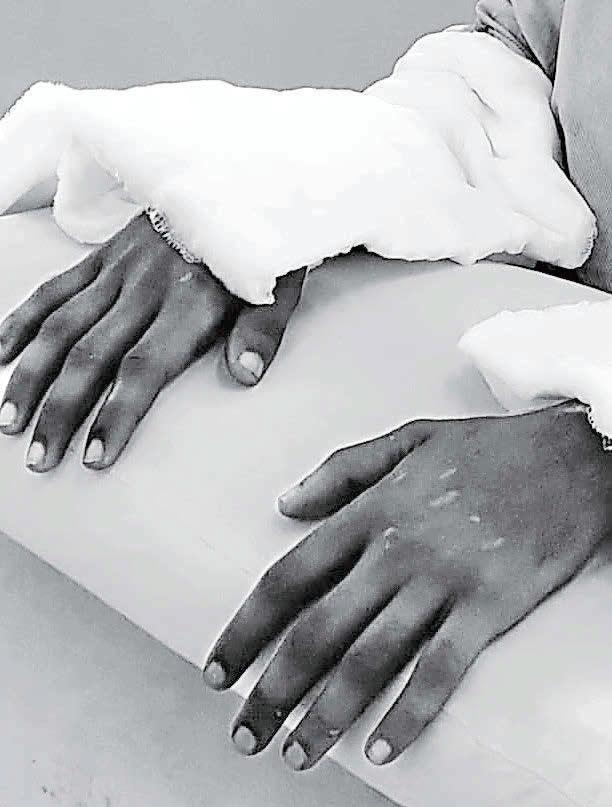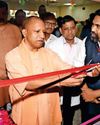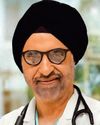Essayer OR - Gratuit
INDIA'S BEST HOSPITALS. THROUGH THE EYES OF THE PATIENT.
THE WEEK India
|November 23, 2025
There is no better metric than patient experience to judge a hospital. For, it offers a peek into everything, from doctors and nurses who walk the extra mile to provide timely cure and care to technology that is redefining treatments

Earlier this year, doctors in a small Assam hospital fought the clock for 75 minutes and won.
Hotelier Sanjay Poddar, 59, collapsed inside Dibrugarh's Apeksha Hospital after suffering an acute myocardial infarction—medical parlance for a massive heart attack. Before doctors could wheel him in for an angiogram, his heart stopped altogether. “The heart had gone into an absolute standstill,” recalls Dr Raja Roy, the intensivist on duty. “We started chest compressions—full CPR with ventilation—and revived him after about eight minutes. But he went into arrest again, and again. Each time we brought him back, the heart would stop.”
Resuscitation is rarely continued beyond 30 minutes, as the chances of meaningful recovery are “very remote”. In the waiting area, Poddar’s son Shubham, 31, watched the clock stretch into eternity. “His pulse was only there when they were pressing his chest; the moment they stopped, it flattened,” he recalls.
Yet the Apeksha team refused to stop. “My back was already pushed to the wall,” says Roy. “We had nothing to lose. The arrest was happening right in front of us—a witnessed arrest—which statistically gives a slightly better prognosis.” The team then did what was almost unheard of, especially in small-town hospitals—open the blocked artery, even with ongoing compressions.
Roy calls it a defining moment in his career. “Medicine is not just protocol; it is judgment and persistence,” he says. “When a team believes there is still a rhythm to find—even faint—you try. That's what care means.”
When the team opened Poddar's heart, what they found astonished them: the main coronary artery was 100 per cent blocked. As soon as the stent went in, the monitor began to beep with a steady rhythm. After 75 minutes of continuous CPR, Poddar’s heart was beating again.
Cette histoire est tirée de l'édition November 23, 2025 de THE WEEK India.
Abonnez-vous à Magzter GOLD pour accéder à des milliers d'histoires premium sélectionnées et à plus de 9 000 magazines et journaux.
Déjà abonné ? Se connecter
PLUS D'HISTOIRES DE THE WEEK India

THE WEEK India
AI ALONE WON'T HEAL INDIA'S HEALTH CARE
India needs a mission-driven, public-first approach in using AI for health, not a race to mimic the west
4 mins
November 23, 2025

THE WEEK India
A Lifeline of Hope Compassionate Revolution ft. Sushena Health Foundation
In a world often focused on metrics and outcomes, a quiet but profound revolution based on compassion and equitable access is being envisioned.
2 mins
November 23, 2025

THE WEEK India
Precision is the New Default Why Robotic Surgery Has Become the Mainstream
In a world where our phones unlock with a glance and our cars can drive themselves, it would be unfair if the operation theatre remained trapped in yesterday's technology. Surgery today is about purposeful precision with every movement measured, every outcome intentional. The evolution of robotic surgery represents this very shift — from ‘good enough’ outcomes to outcomes that are consistently excellent and predictable.
1 mins
November 23, 2025

THE WEEK India
New kids on the stage
For these next-gen actors, theatre holds as much appeal as stardom in cinema
5 mins
November 23, 2025

THE WEEK India
Precision Driven IVUS-NIRS Technology is Transforming Cardiac Care
Dr Balbir Singh, Chairman and Head of Cardiology at Max Healthcare, is a recipient of numerous prestigious honours, including the Padma Shri, for his exceptional skills and contributions in interventional cardiology and electrophysiology. Dr Singh has performed thousands of Intra-Vascular Ultrasound (IVUS) driven Angioplasties. IVUS is used in angioplasty to provide doctors with a detailed, real-time, three-dimensional view of the artery's interior, which helps them to precisely assess blockages, guide stent placement, and confirm the success of the procedure.
3 mins
November 23, 2025

THE WEEK India
White Spot Lesions in Dentistry
White spot lesions (WSLs) are the earliest visible signs of dental caries, appearing as chalky white or opaque areas on tooth surfaces. They indicate early enamel demineralization and can be seen with the naked eye. Early recognition and management are essential to prevent progression into cavities.
1 mins
November 23, 2025
THE WEEK India
The New Age of Spine Surgery
Taking care of your spine begins with small, consistent habits. Maintaining correct posture while sitting or lifting, walking regularly, and strengthening back and core muscles can go a long way in preventing problems. Eating a balanced diet and keeping body weight under control also help reduce stress on the spine.
1 min
November 23, 2025

THE WEEK India
THE RED FLAG IN YOUR URINE: Understanding and Detecting Bladder Cancer
The bladder is an organ which stores urine, which is produced by the kidneys. The bladder is a hollow, viscus organ that holds it for a few hours before it is eliminated. While it can occur at any age, the median age of diagnosis is typically 70 years or older.
1 mins
November 23, 2025

THE WEEK India
INTERNATIONAL QUALITY HEALTHCARE MADE AFFORDABLE IN VELLORE
Naruvi Hospitals, creating new benchmarks in affordable world class health care, spreading its ‘Fragrance of Care’ in Vellore, and beyond.
4 mins
November 23, 2025

THE WEEK India
Richardsons Face Hospital
India's first face hospital
1 mins
November 23, 2025
Listen
Translate
Change font size

